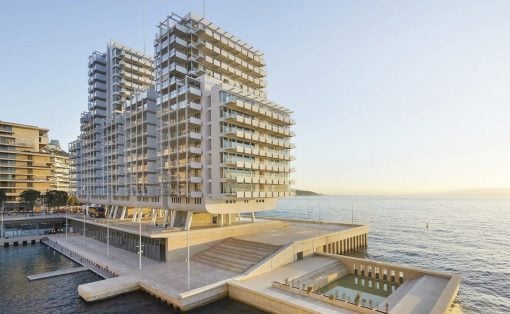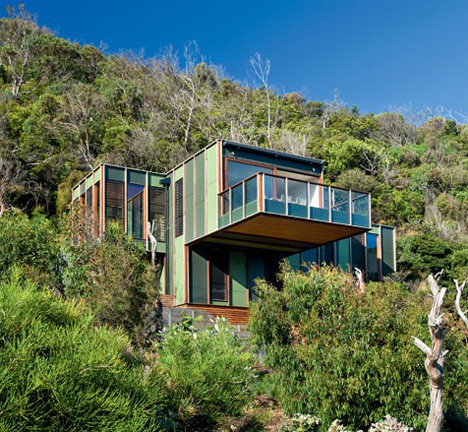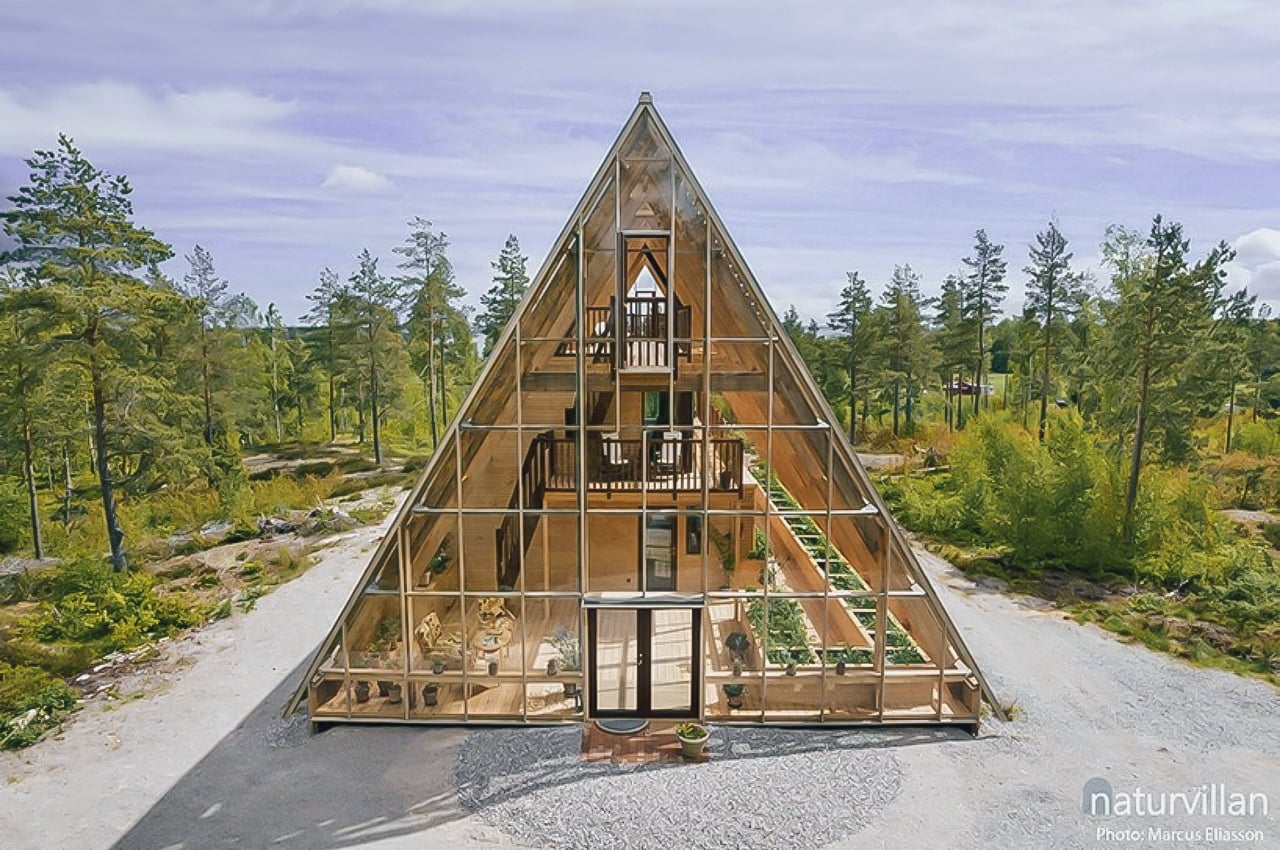
Biophilic design in architecture has been gaining immense popularity! It’s an architectural approach that seeks to connect our human tendency to interact with nature, with the buildings we reside in. It aims to increase the connectivity between a building’s residents and the natural world. These structures create environments that are peaceful, calm, and nurturing to reside in. They positively affect our mental and overall wellbeing. With biophilic designs slowly taking over the world of architecture, we’ve curated a collection of designs that we felt were the best of the lot! From a tiny timber home to a self-sufficient green retreat in the forest – these architectural structures are the epitome of biophilic design!
1. Atri


Designed by a company called Naturvillan, Atri is a newly built A-frame villa located on the shores of Lake Vänern. The self-sustaining and climate-smart home is like a sustainable greenhouse in the middle of the mountains! It provides stunning views of the lake, as well as of the surrounding majestic trees, and a natural plot with rock slabs.
Why is it noteworthy?
It is A-shaped with a stable base directly on the mountain and has a continuous axis so you can see through the whole house in one view. As you look up the house blends in among the trees, becoming part of the natural landscape.
What we like
- Self-sustaining and sustainable
- Climate-smart
What we dislike
- No complaints!
2. The Slope House
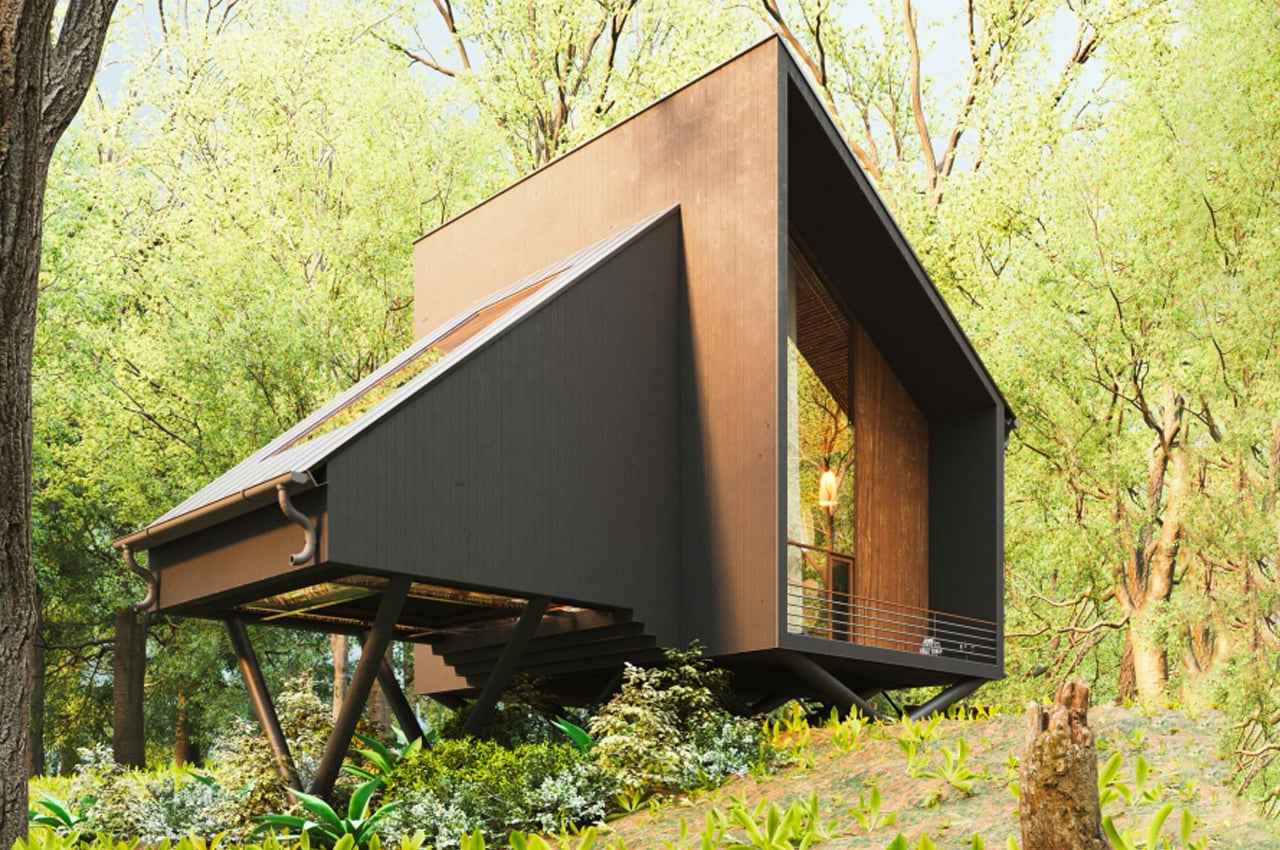
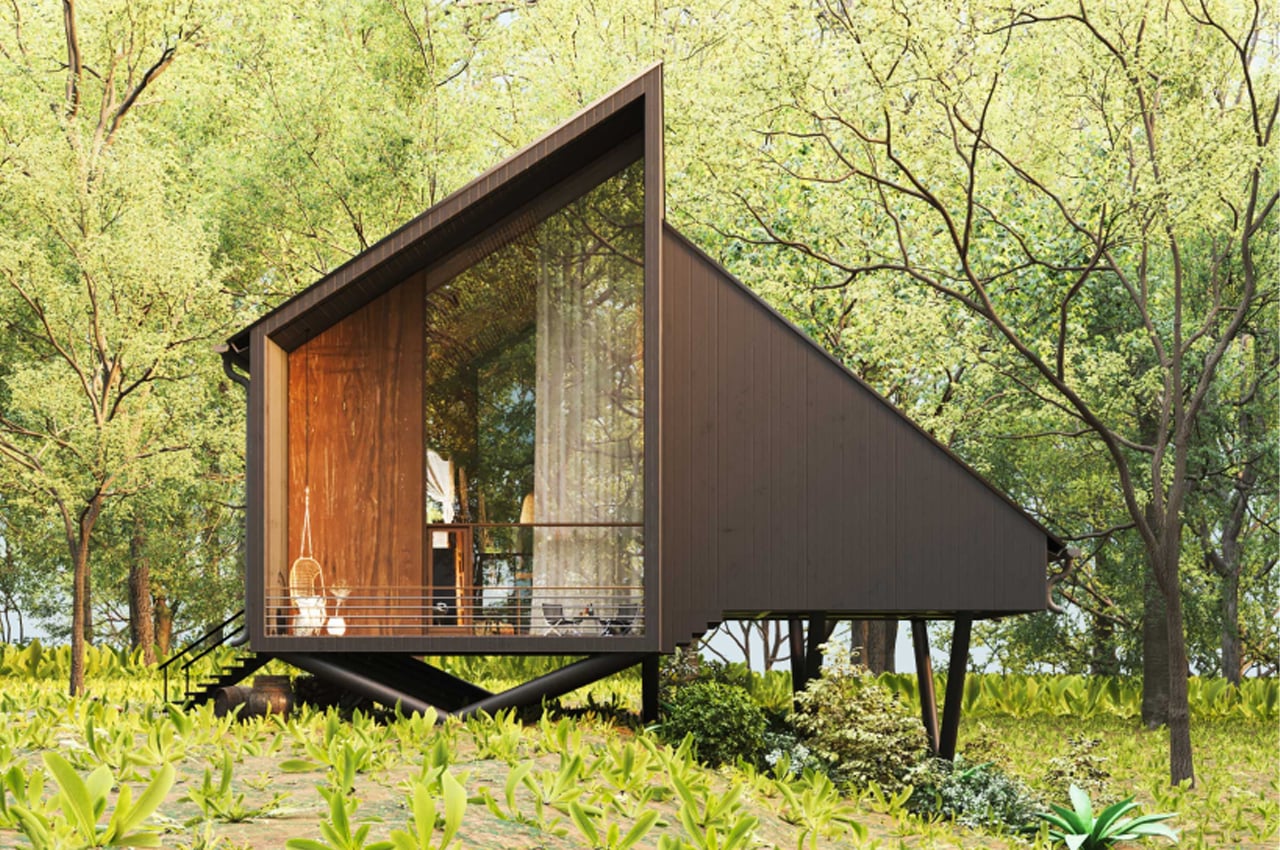
The Slope House from the 3D visualizer Milad Eshtiyaghi is an untraditional A-frame cabin that employs biophilic design inside and out. 3D visualizer and international architect Milad Eshtiyaghi has long been drawn to escapist hideaways perched on rugged, seaside cliffs and isolated cabins envisioned beneath the Northern Lights. Today, he turns his gaze to tiny cabins. A bit more quaint than treacherous, Eshtiyaghi’s latest 3D visualization finds an angular, timber cabin nestled atop an idyllic hillside somewhere in the rainforests of Brazil.
Why is it noteworthy?
Dubbed the Slope House, the timber cabin maintains a signature triangular frame that’s a thoughtful twist on the conventional A-frame cabin. Defined by two modules, one internal volume hosts the cabin’s bedroom while the other keeps the home’s main living spaces, like the dining area, kitchen, and den. The tiny cabin from Eshtiyaghi is envisioned propped atop a truss system that was specifically chosen to minimize the home’s impact on the preexisting landscape.
What we like
- A biophilic design style has been integrated into the cabin’s interior spaces
- Natural plants have been added inside the house as a small garden
What we dislike
- The theme and form of the home may be a bit too eccentric for some
3. Easyhome Huanggang Vertical Forest City Complex
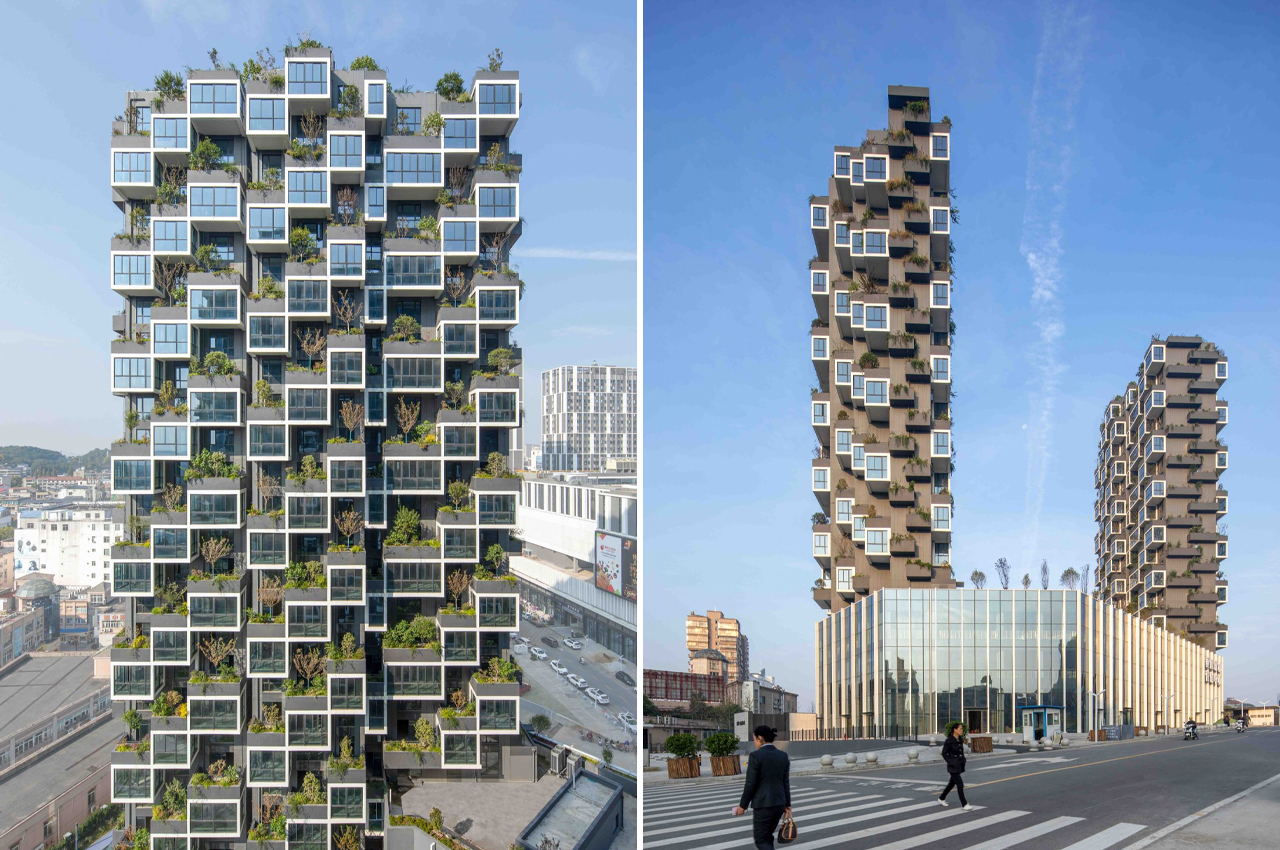
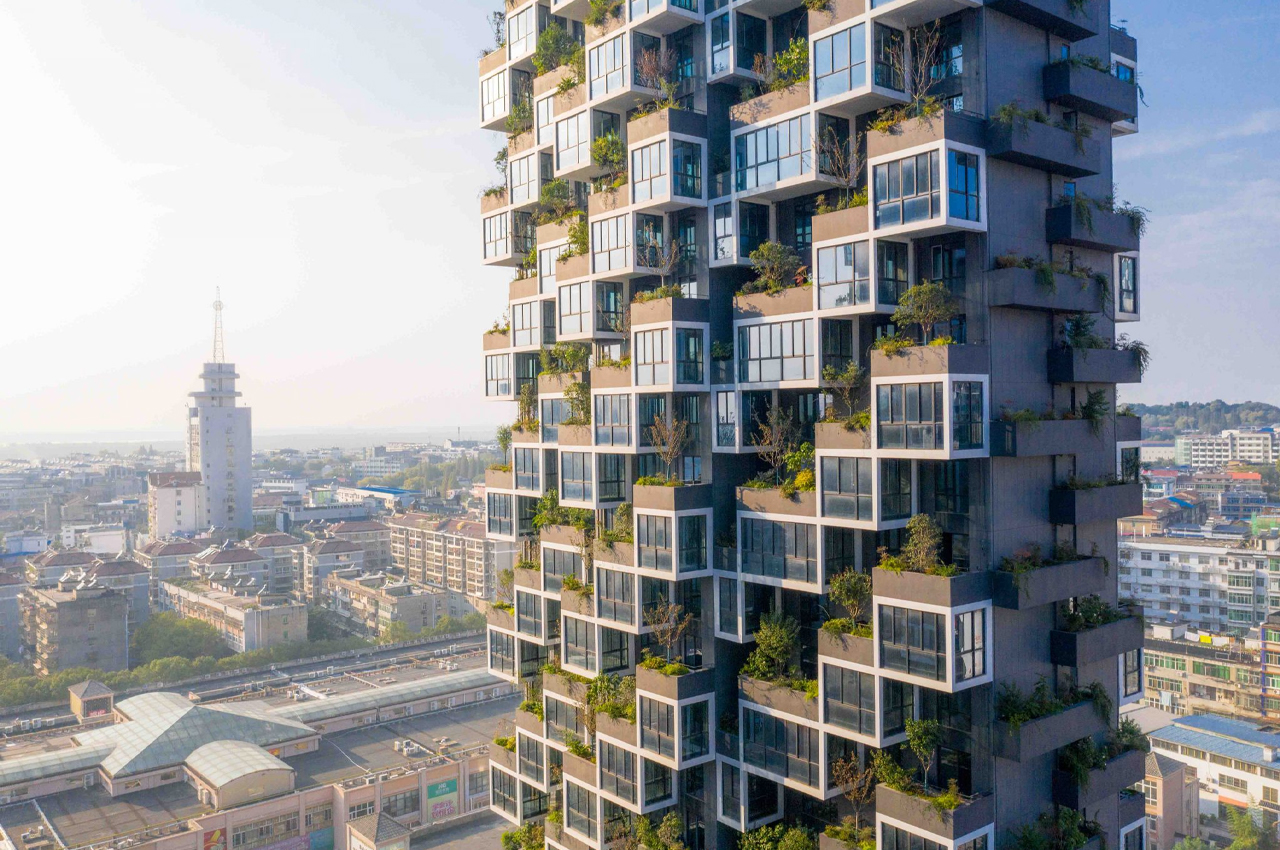
Easyhome Huanggang Vertical Forest City Complex, comprised of five sustainable green towers, was built to mitigate the effects of urbanization and fight for the environmental survival of our cities.
Why is it noteworthy?
As our cities become increasingly popular destinations for younger generations, the need to introduce sustainable and biophilic architecture has never felt more urgent. As we face urban expansion and densification, architects are taking initiative to ensure the environmental survival of our contemporary cities. Italian architect Stefano Boeri has found promise in vertical city forest complexes, a form of biophilic architecture that incorporates teeming greenery into the very structure of residential buildings. Easyhome Huanggang Vertical Forest City Complex is Boeri’s latest sustainable undertaking, a forest complex in Huanggang, Hubei, China “intended to create a completely innovative green space for the city.”
What we like
- 404 different trees fill out the layout of Easyhome, absorbing 22 tons of carbon dioxide and producing 11 tons of oxygen over the span of a year
- Increases biodiversity by attracting new bird and insect species
What we dislike
- No complaints!
4. The ZeroCabin


Two sisters in Chile got the ZeroCabin crew to help create their dream retreat in a forest in the Lake District. The cabin faces the sea on the east and then on the west, you can see a 70-meter tall hill so you get a perfect view either way.
Why is it noteworthy?
Following their previous designs, this ZeroCabin Krul uses timber as a frame for the entire structure but with structural insulated panels with pulverized cardboard. The cabin is built to be green and so it uses a two-kilowatt solar system for its electrical needs and a five-cycle system that collects rainwater for its water needs. Shower water is also collected and is used to flush the toilet. The bathroom waste is treated with the Toha System, a vermicomposting process that lets earthworms turn them into nutrient-rich humus.
What we like
- They used natural materials as well as affordable but sustainable technologies to build the cabin
What we dislike
- No complaints!
5. Hugging House
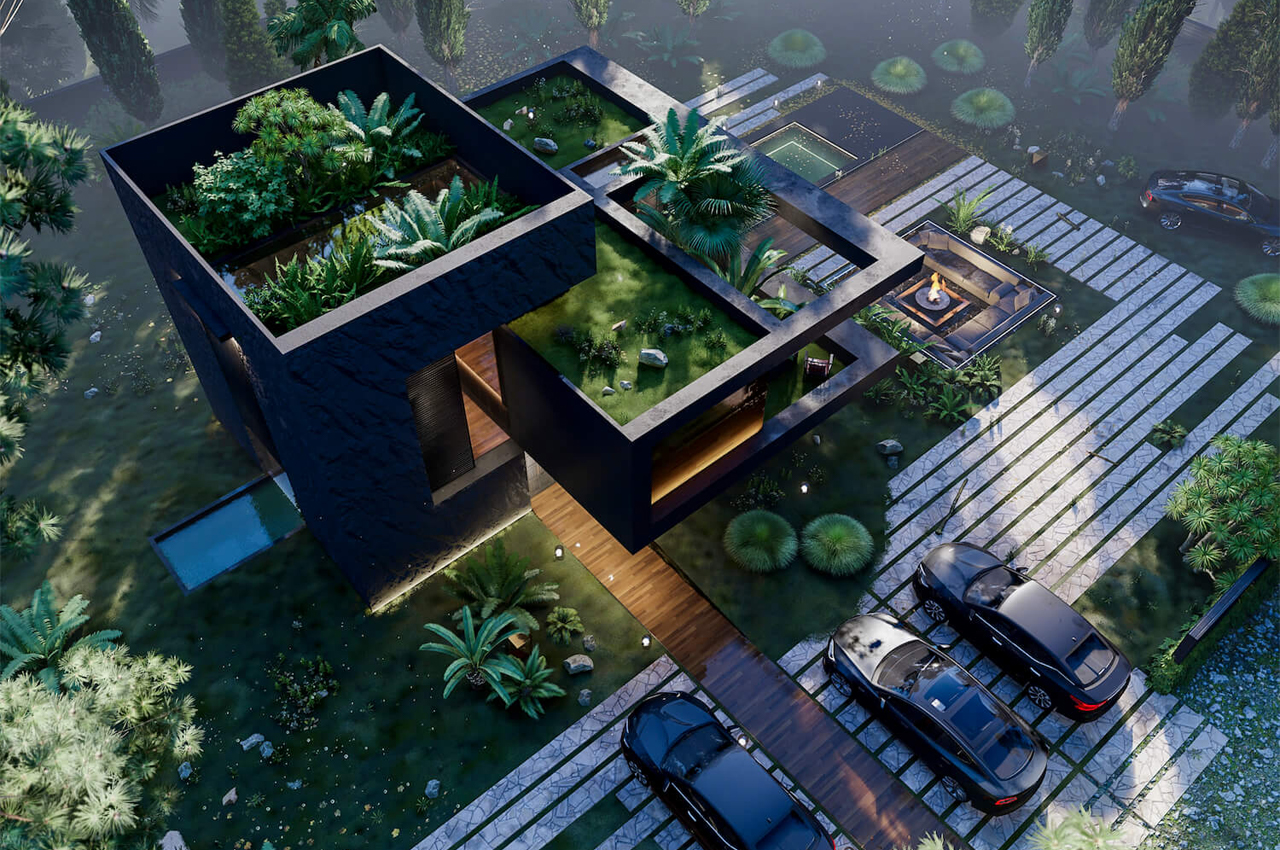
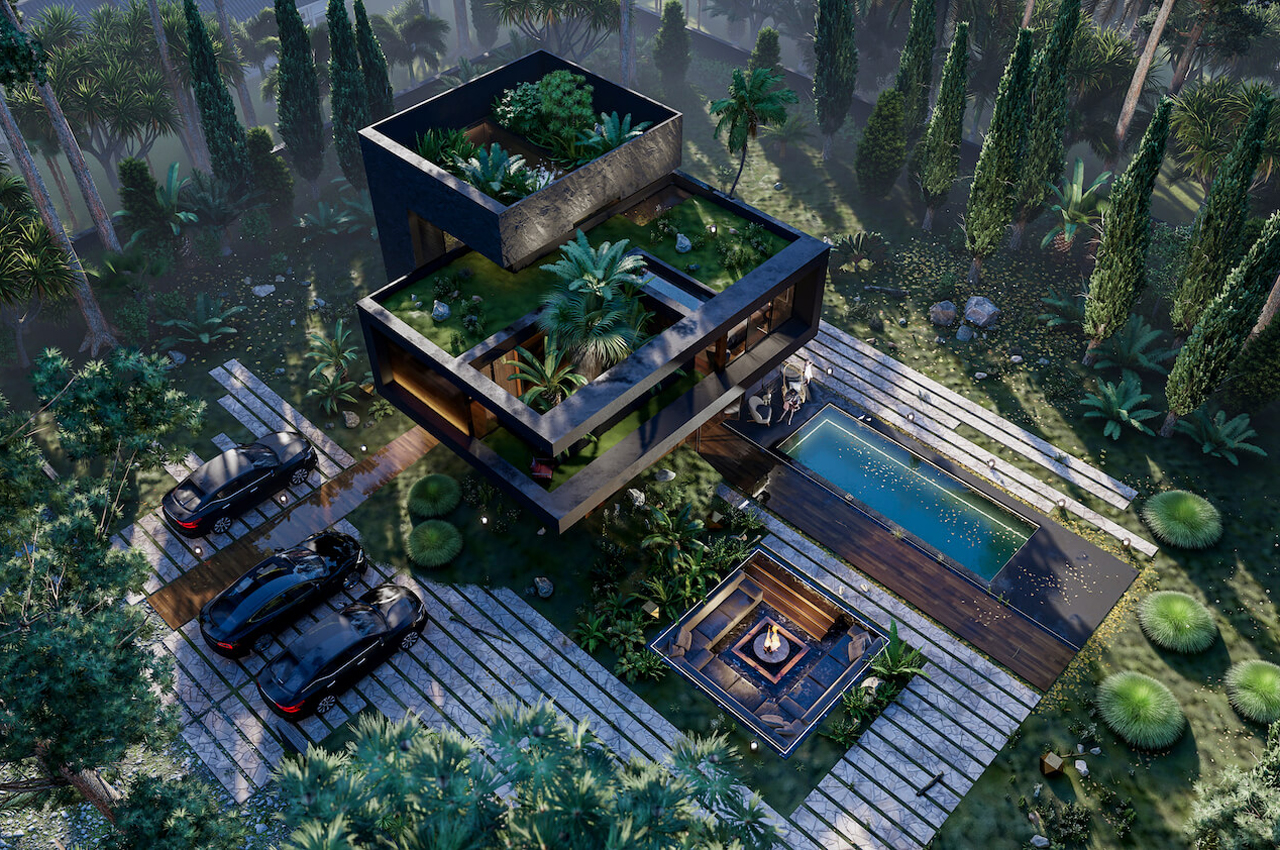
Hugging House is a modern eco-home architecture concept that features a garden roof and incorporates the natural landscape of the land into its layout.
Why is it noteworthy?
Veliz Arquitecto’s Hugging House is still only in its conceptual phase, but if brought to life, Hugging House’s location would be fully incorporated into the layout of the home. Describing the design in his own words, Veliz Arquitectos notes, “We have taken advantage of the slopes of the land in order to create visual connections at different heights with the existing vegetation and beyond the landscape, as well as [used] the premises with which we always try to characterize the project.”
What we like
- Features a garden roof
- An intriguing floating staircase
What we dislike
- It’s still a concept!
6. Timber House


We’ve seen a lot of development in green architecture, and so we see buildings, condominiums, and other developments successfully incorporate environment-friendly aspects when creating these structures. An upcoming development in Toronto will be including some of these kinds of structures, including what may become the largest residential mass-timber buildings in Canada.
Why is it noteworthy?
Timber House will become part of the Quayside development in Toronto’s waterfront. The building, which will be long and narrow, will house affordable residential units as well as residences for senior citizens. What will make it stand out is that it will be a plant-covered building with the facade getting crisscrossed narrow beams and incorporating patios in the structure to put up the greenery. Once completed, it will be one of the biggest mass-timber structures in Canada.
What we like
- The first all-electric, zero-carbon community
- Will also have a community care hub, recreation places for the community
What we dislike
- No complaints!
7. CABN.CO
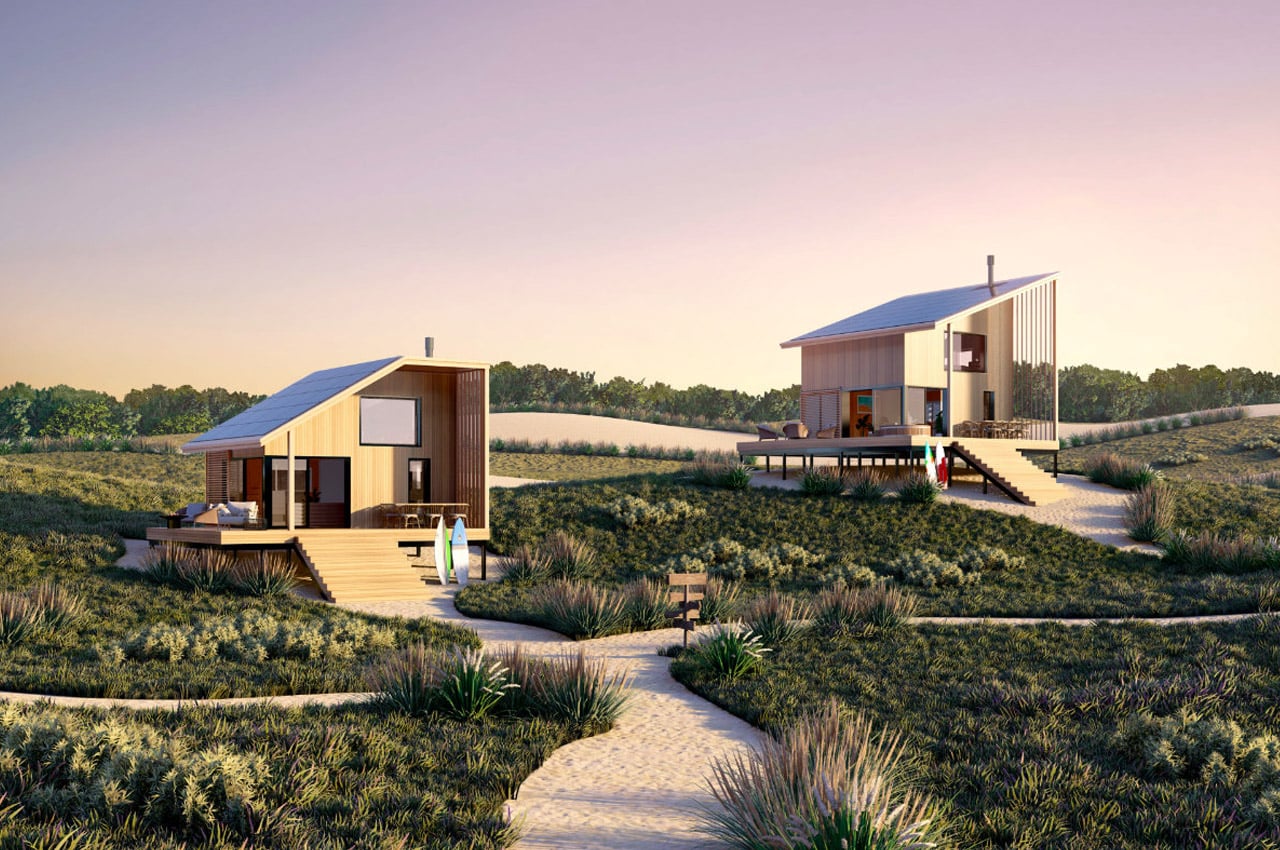
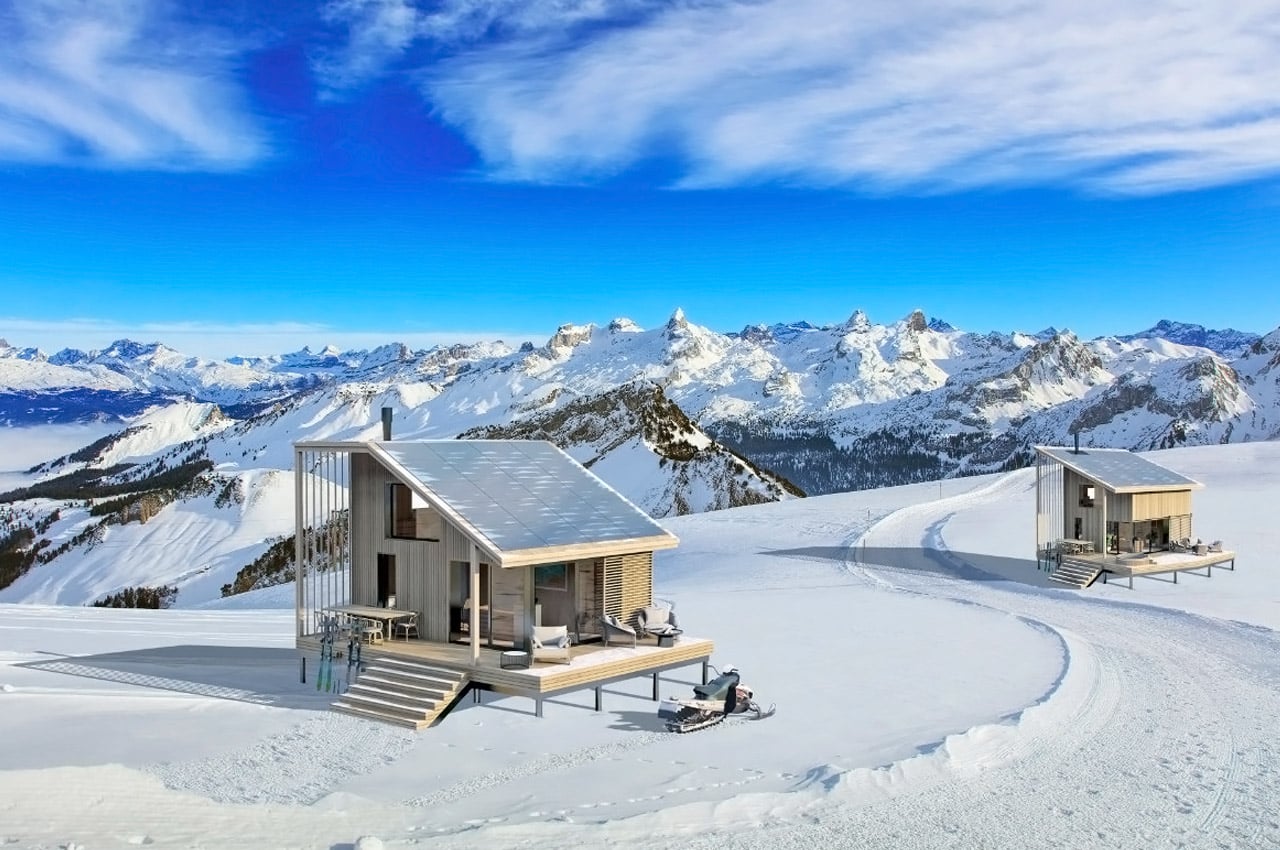
Today, more and more people are veering towards homes that are green and energy-efficient. Words like net zero, prefab, and Passive House standard are thrown like confetti while describing their dream home! In an age, where sustainable architecture is thriving more than ever, CABN.CO by Jackson Wyatt is a much welcomed upcoming project.
Why is it noteworthy?
CABN.CO is on a mission to build energy-efficient and smart homes that can be placed in unique and diverse locations all over the world. These versatile cabins can be a home for you almost anywhere in the world – whether in the city or on a remote island in the Bahamas! These cabins focus heavily on solar shading and roof overhangs.
What we like
- Energy-efficient
- Equipped with smart technology
What we dislike
- No complaints!
8. The Rain Harvest Home
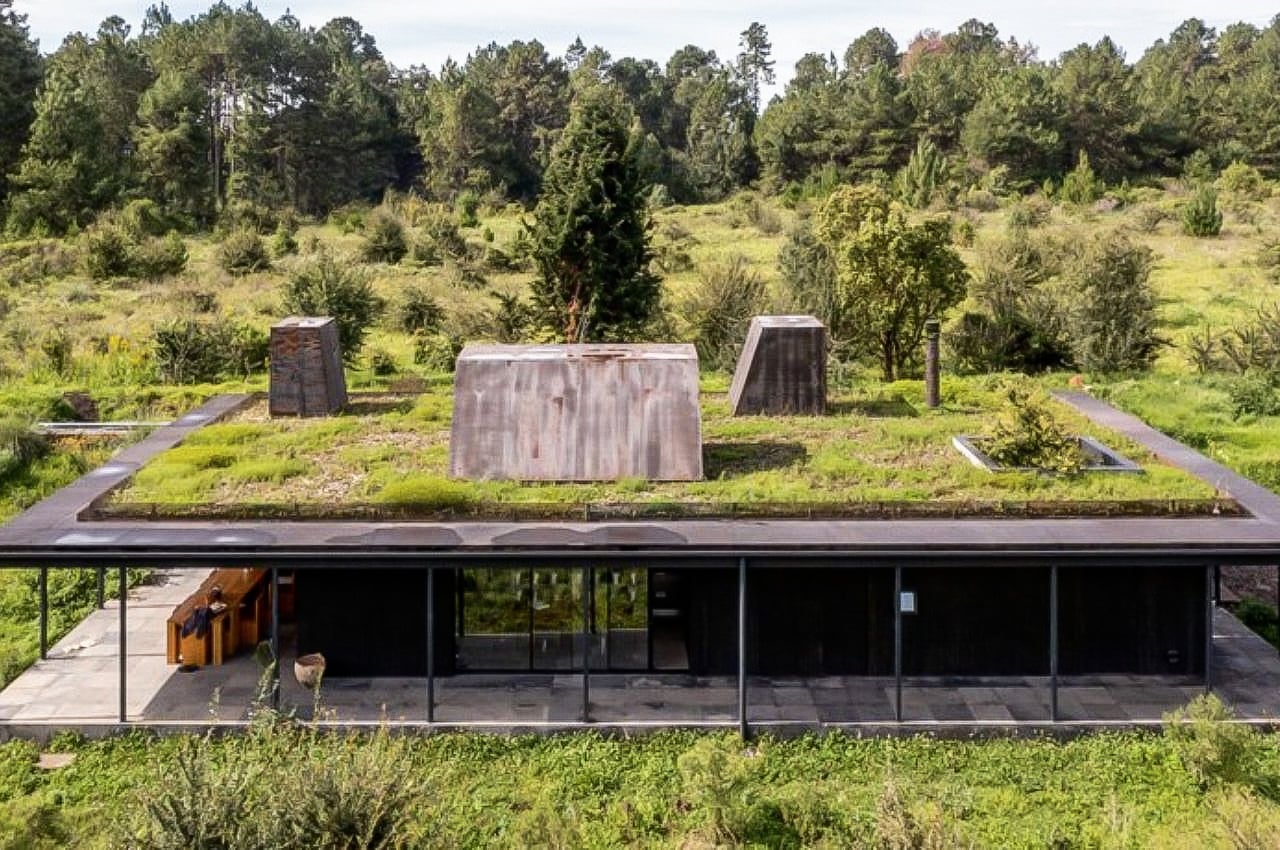

Even though I know I will probably never be able to live in one, I definitely like looking at homes that are located in the middle of nature. Of course, it still needs to have some kind of modern conveniences as a city girl like me still loves her creature comforts. But the idea of living in a luxurious but eco-friendly home near mountains and trees and rivers has a certain, romantic appeal, even if that will most likely remain just a dream.
Why is it noteworthy?
The Rain Harvest Home seems to meet all of the criteria I was mentioning above as it is located in a nature reserve in Valle Bravo, just two hours away from Mexico City. It’s actually more than just a house, although the house itself is already pretty amazing in itself. It also has an architect’s studio and a detached bathhouse just a few steps away from the main house.
What we like
- A green roof that seems to be hovering above the house
- Net-zero structure
What we dislike
- The raw and unpolished aesthetics may not appeal to everyone
9. Playa Viva
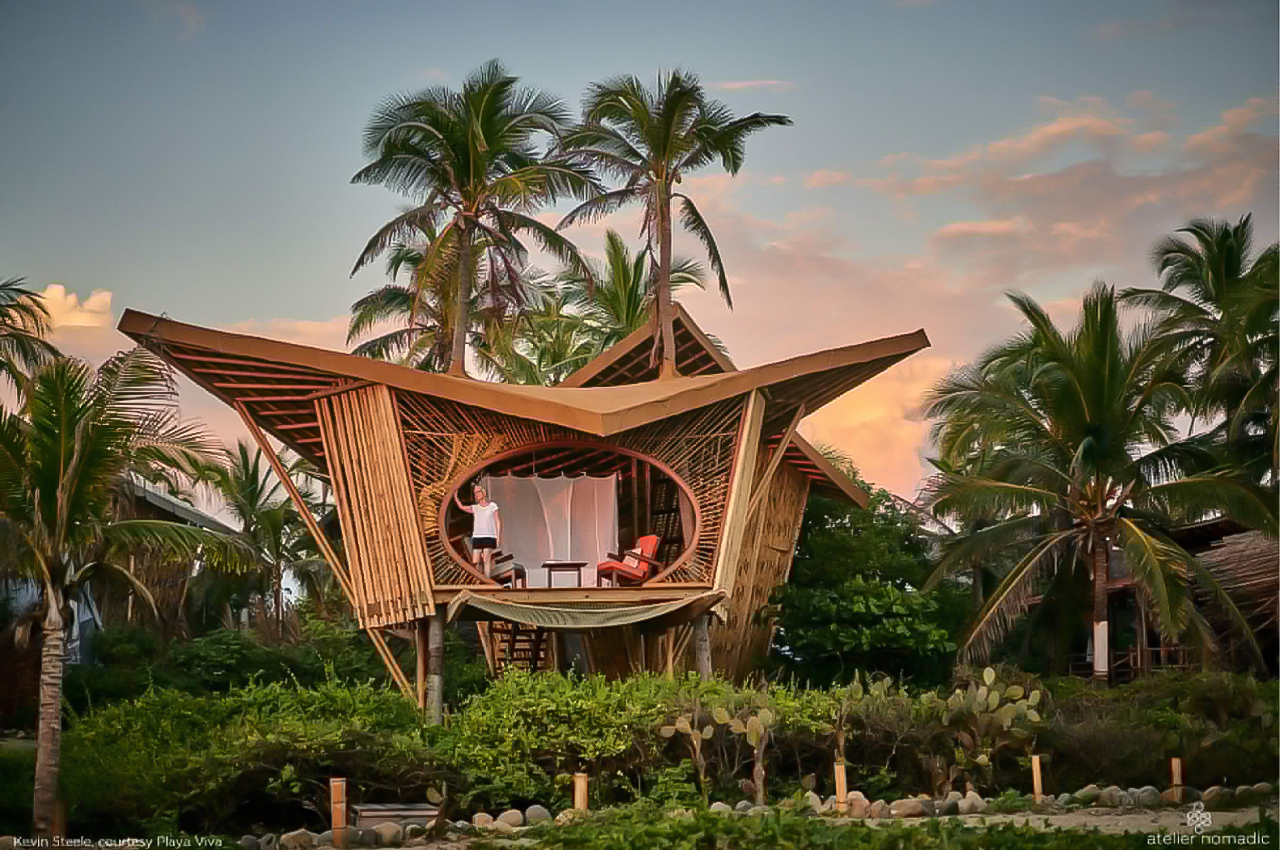
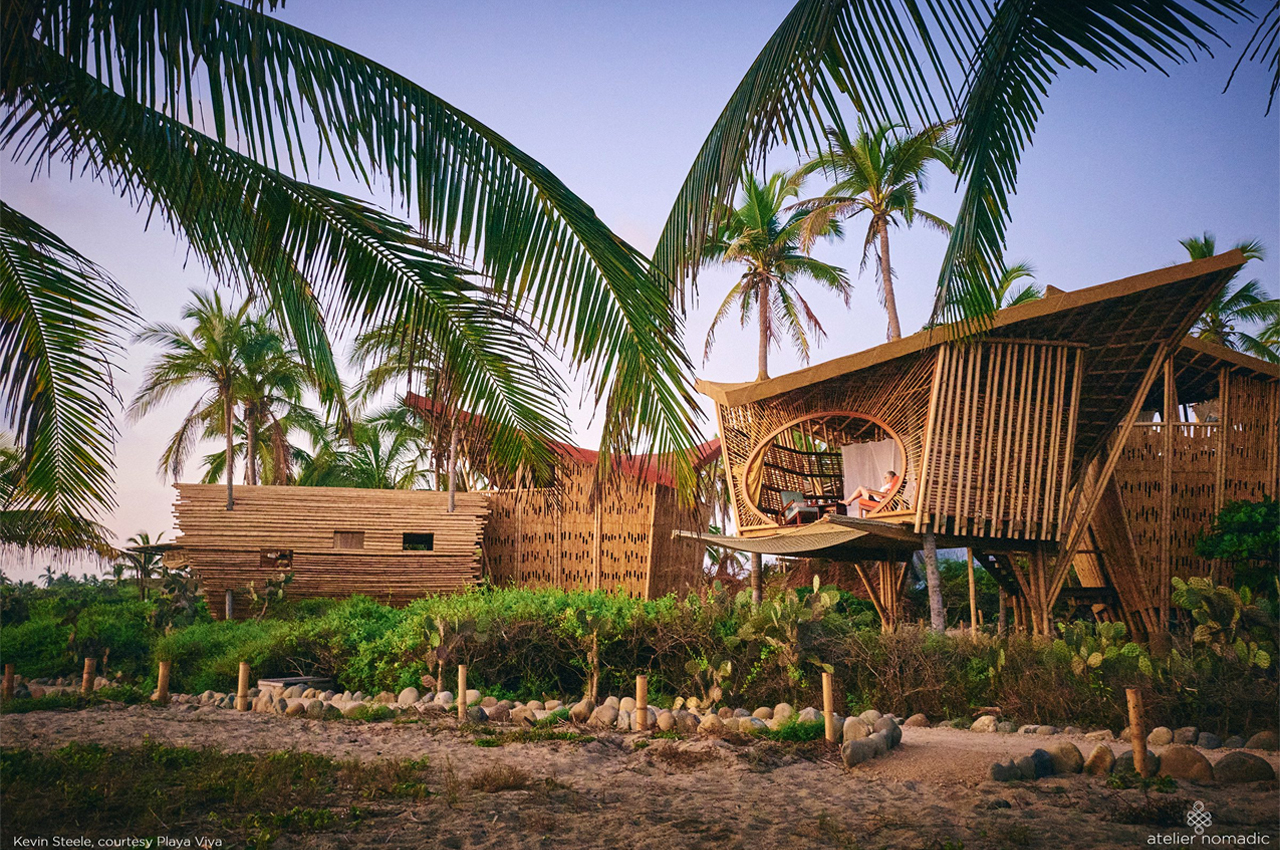
Playa Viva is an ecoresort in Juluchuca, Mexico made up of off-grid treehouse-style villas with roofs shaped like the wings of Mobula Rays.
Why is it noteworthy?
The beauty of biophilic architecture is that nature provides the blueprint. In environments with dense foliage and rough terrain, integrating the natural landscape into the lay of the building helps define the floor plan’s parameters and the building’s structural shape. Immersing guests in nature, biophilic architecture artfully dissolves the barrier between the outdoors and interior spaces. Atelier Nomadic, a Rotterdam-based architecture firm that specializes in biophilic architecture, designed Playa Viva, an eco-resort village of treehouse-style villas that plants guests right on the surf of the Pacific Ocean in Juluchuca, Mexico.
What we like
- The structural shape replicates the flexed wings of a Mobula Ray
- Functioning like a gigantic umbrella, the hyperbolic and paraboloid-shaped roof offers total coverage from the blazing sun and heavy rain
- It’s an eco-resort
What we dislike
- No complaints!
10. The Holiday Home
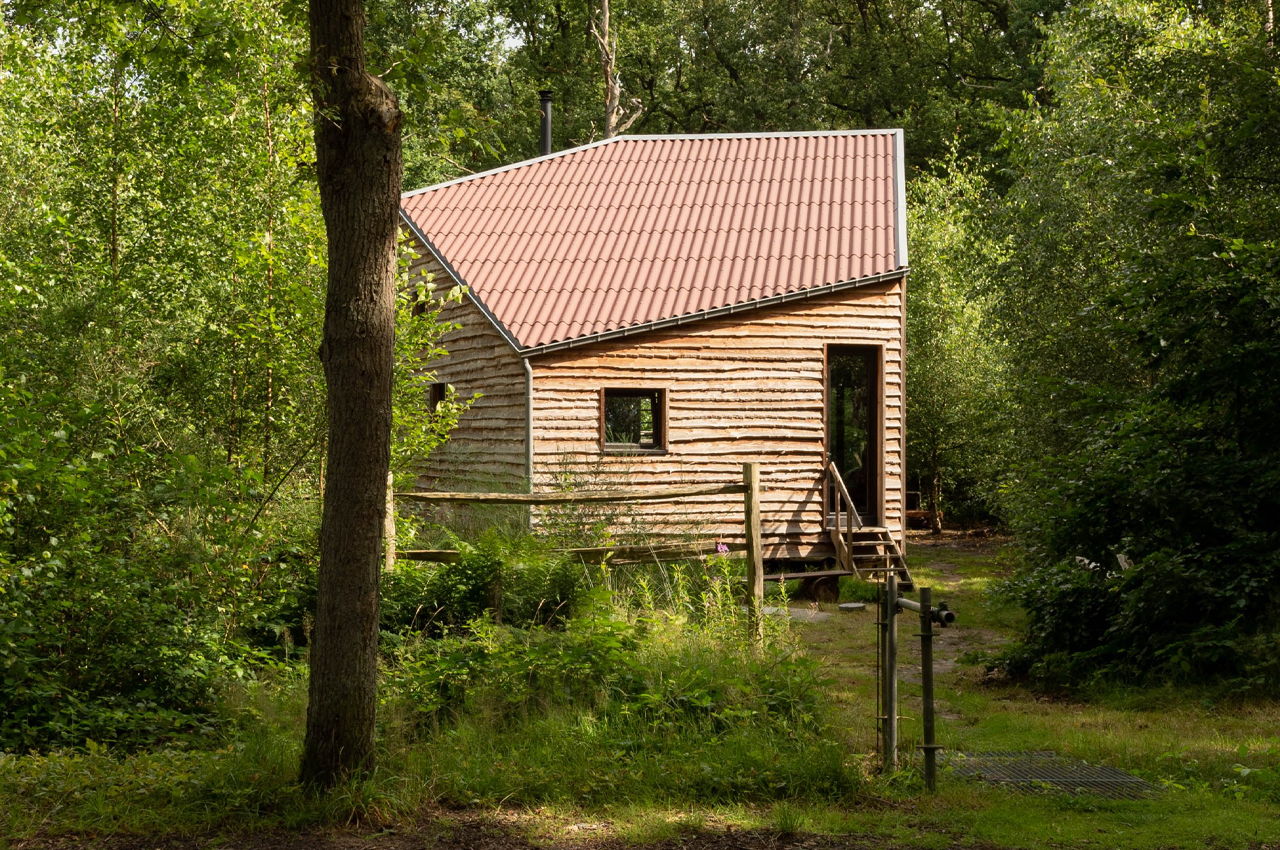
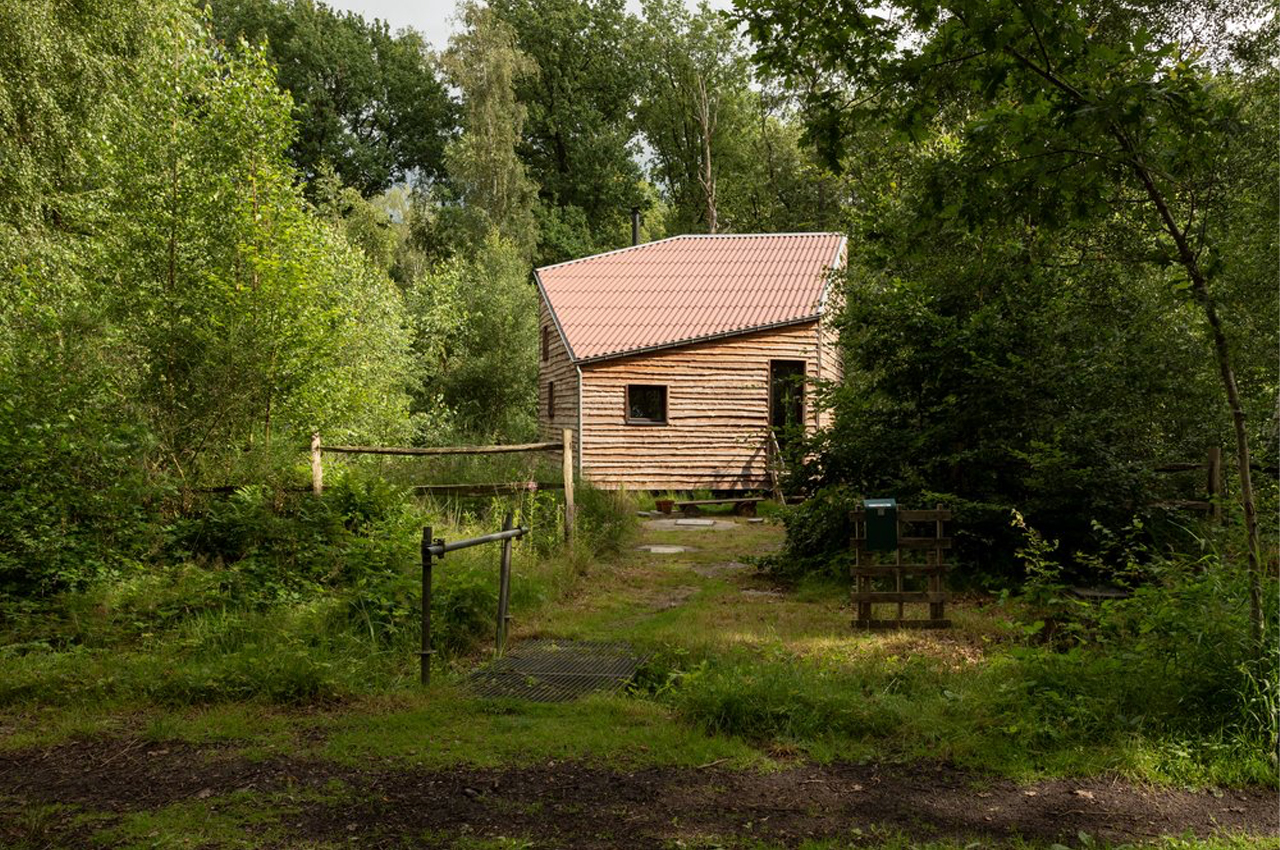
The Holiday Home is an eco-conscious tiny home in Belgium that was built using circular construction and bio-ecological building methods. In an effort to close material loops, circular construction methods choose first to recycle and reuse before consuming new building material. In this way, circular construction is inherently eco-conscious and fairs well with architecture that’s rooted in the environment.
Why is it noteworthy?
Biophilic and organic architecture tend to rely on disused waste and recycled matter for building material, underlining a stalwart commitment to the land below each building’s foundation. Depending on circular construction and bio-ecological building methods to give rise to one of their latest projects, Polygoon Architectuur designed and constructed a tiny holiday home for a small family.
What we like
- Eco-conscious home
- Utilizes circular construction
What we dislike
- Not everyone may be comfortable with the unique shape of the home



